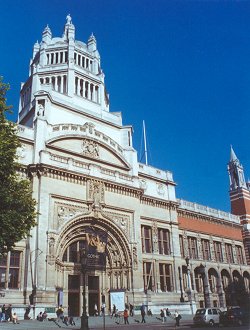So you have done your research online, but the amount of information about the piece that you are interested in is just not enough. How do you get more information? Contact the museum where the artifact is stored.
I have chatted with many people over the years about their communications with museums. Some have had good experiences, and some have not. Some museums have a mandate to educate the public (the Museum of London is fabulous about this). Some are still locked in the archaic thought that the artifacts are “theirs” and that unless you are someone important you shouldn’t even ask for information, much less the right to actually SEE something. Fortunately this last view of the world is changing, but, and this is a BIG but, we need to be realistic. Most museums, like any underfunded organizations, are staffed by overworked employees. They already have a ton of work on their plates and any request that you make is just another thing to add to that pile.
So how can we make communications with a museum more likely to succeed? Well, the first thing is to make our question as concise as possible. Locate the museum’s accession number for the artifact. Every artifact in a museum usually has a specific number associated with it. In older collections that have not been updated, you will occasionally find a picture of multiple items, where there are no numbers listed for the individual pieces – note the number associated with that picture. When you contact the museum, use that number.
Be specific. Do not ask things like “could you tell me everything about this piece”. If you want to know “everything” then ask yourself what “everything” means, and make a list. Good examples of the sort of things to ask include: what is the thickness of the metal in this piece, what type of fabric is this made from, how much does this piece weigh? Be specific. Ask if there is a publication available that has specific information about an artifact.
I once contacted the Archaeology staff at Jamestown Historical Site, in Virginia, to ask about some black glass buttons that were in their collection. I randomly chose a collections archaeologist off of a list on their website and wrote her a concise note about the information that I was looking for and why I wanted it. It took about a week to hear from her, and when her email came back it contained information about the buttons that I knew about, and others that I did not know about, including pictures. I wrote her back, thanking her for all of the excellent information and asked if she knew of any publications. And yes she did.
But what do we do if the museum in question is in a non-English speaking country? Google Translate! Write a simple, concise letter. No complex sentence structures, no flowery descriptions, and run it through the translator. The person that you are writing to may speak English as well as you do, but they will appreciate your effort and the fact that you do NOT expect everyone to speak English. An example would be something like this:
I am studying Celtic pottery. Your museum has a piece that I would like information about. The number of the piece is 1234567-AB. Can you tell me how tall and how wide this piece is? Is there any published information about this piece?
Translation software usually gets the correct information across if the sentences are simple.
And be patient! Do not expect an answer within 24 hours. Or even a week. Assume that the person that you have written is busy. Maybe they are out of town at a convention, or maybe they are in the field. If you have not heard anything in two or three weeks I would write again and say something like “I am sure that you are very busy. I was wondering if you have had the time to investigate my previous request for information?” Always be polite. I understand the frustration of not being able to get information on something that you are really interested in. It happens.
So what do you do when you have exhausted your museum options and you haven’t found the information that you are looking for?
Next Time: Where do I go for more information?



